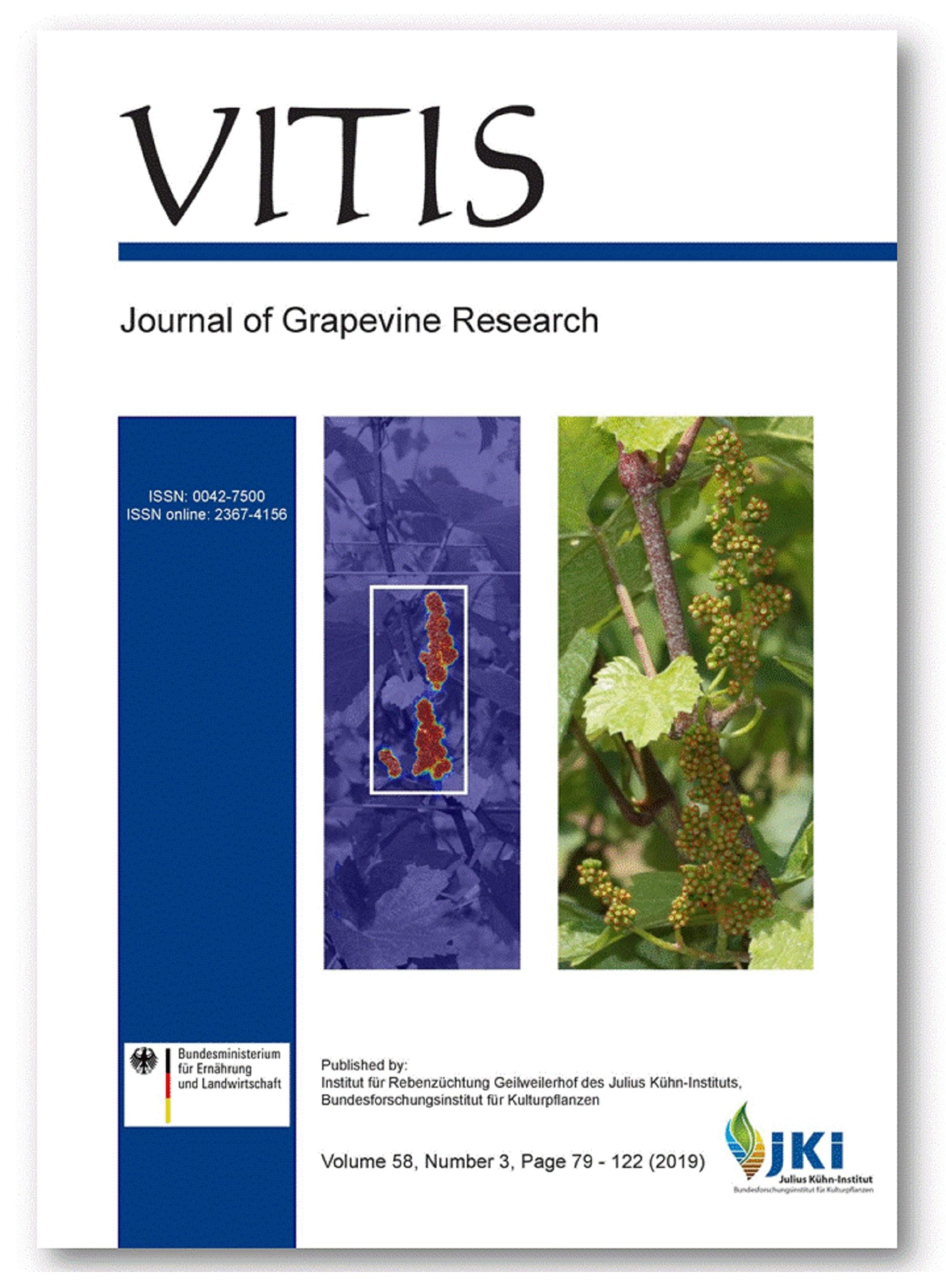Analysis of the mechanical properties of wood attacked by Xylotrechus arvicola (Coleoptera: Cerambycidae) larvae, and its influence on the structural properties of the plant
DOI:
https://doi.org/10.5073/vitis.2019.58.105-112Keywords:
Vitis vinifera; Xylotrechus arvicola; wood borer; wood properties; mechanical strengthsAbstract
Xylotrechus arvicola is an invasive insect on Vitis vinifera in the main wine-producing regions of the Iberian Peninsula. X. arvicola larvae bore into the grapevine wood and make galleries, which cause structural damages to the plant. The aim of this study was to investigate how grapevine wood infested by larvae affects the mechanical properties of the plant in comparation with those of uninfested wood. Samples of grapevine wood uninfested and infested by larvae were collected from vineyards. Compression and flexural strengths as well as simulated structures of grapevine wood in field, in relation to harvest weight by variety, were used to quantify the wood mechanical properties. Infested wood endured a lower strength and normal tension, and exhibited a reduction in the structural capacities in the simulation of harvest weight of 'Cabernet-Sauvignon' variety (up to 62.0 %). 'Tempranillo' (despite its high mechanical slenderness values) and 'Cabernet-Sauvignon', were the varieties that showed a higher resistance on trunks and branches, respectively. A lower bending moment was observed on the infested branches of all varieties. Changes in the mechanical properties of infested wood suggest a decrease in mechanical resistance of wood attacked by larvae that could contribute to the rupture of the infested grapevine over time. Grapevine wood attacked by X. arvicola larvae could be more sensitive to mechanical external factors in vineyards such as strong winds, harvest weight and vibration exerted by harvesting machines.
Downloads
Published
Issue
Section
License
The content of VITIS is published under a Creative Commons Attribution 4.0 license. Any user is free to share and adapt (remix, transform, build upon) the content as long as the original publication is attributed (authors, title, year, journal, issue, pages) and any changes to the original are clearly labeled. We do not prohibit or charge a fee for reuse of published content. The use of general descriptive names, trade names, trademarks, and so forth in any publication herein, even if not specifically indicated, does not imply that these names are not protected by the relevant laws and regulations. The submitting author agrees to these terms on behalf of all co-authors when submitting a manuscript. Please be aware that this license cannot be revoked. All authors retain the copyright on their work and are able to enter into separate, additional contractual arrangements.



